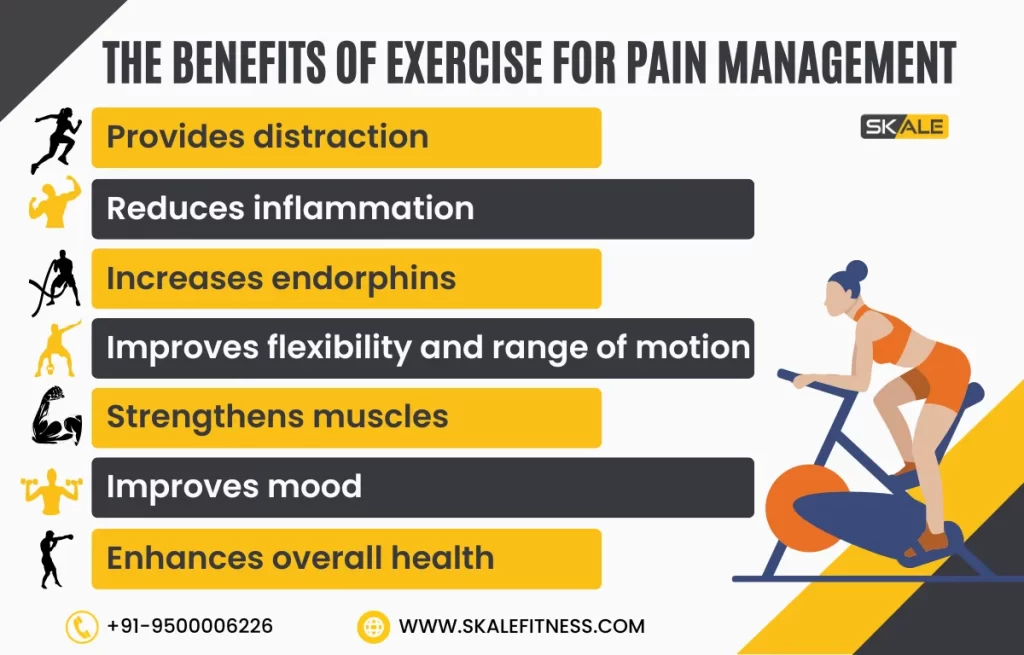Pain is a common problem that affects the people globally. Whether it’s due to an injury, a medical condition, or just the natural process of aging, pain can greatly impact the quality of life. Exercise for pain is an excellent tool for managing pain and improving overall well-being. This blog will guide you on how to create an exercise routine that is safe and effective for managing pain.
Importance of Exercise to reduce pain
When anyone is suffering from pain then they need to educate and encourage to opt for pain management solutions. Exercise for pain is a great tool for reducing any pain that one is suffering with. Educating and encouraging individuals suffering from pain to incorporate exercise into their daily routine. Exercise has been shown to be an effective way of reducing pain, improving mobility, and increasing the overall quality of life.

Understanding Your Pain and Physical Limitations
Before beginning any exercise program, it’s crucial to consult with a medical professional. They can assess your pain level and physical capabilities, and help you develop a safe and realistic exercise plan. Understanding your pain and physical limitations will allow you to create an exercise routine that is tailored to your needs and abilities.
Choosing the Right Exercises
There are many types of Exercise for pain that can help manage pain, including low-impact options for those with mobility issues. Strengthening exercises can help improve muscle and joint function, while stretching and flexibility exercises can improve range of motion. Aerobic exercises can improve circulation and reduce pain. Choosing the right exercises to strengthen the lower back like Aerobic exercises can relieve your pain level and can boost your physical capabilities.
Gradually Building Up Intensity
It’s important to gradually increase the intensity of your exercises to strengthen the lower back by adopting a physical exercise routine over time. This will help you avoid overexertion and prevent flare-ups. It’s also crucial to pace yourself and listen to your body. If an exercise is causing too much pain, it’s okay to modify or skip it.
Incorporating Variety into Your Routine
Mixing up your exercises can help prevent boredom and injury. Balancing cardio and strength training are a few Exercise for pain that can help ensure that you’re getting a full-body workout. Incorporating fun activities, such as hiking or dancing, can be enjoyable and help keep you motivated.
Setting Realistic Goals and Tracking Progress
Setting achievable goals can be a great motivator. Tracking your progress and celebrating milestones can help you stay motivated and on track. As you progress, you can make adjustments to your routine as needed.
Conclusion
In conclusion, exercise can be an effective tool for managing pain. By understanding your pain and physical limitations, choosing the right Exercise for pain, gradually building up intensity, incorporating variety into your routine, and setting realistic goals and tracking progress, you can create an exercise routine that is safe and effective for managing pain.
It’s important to seek professional guidance as needed, but with dedication and persistence, you can improve your quality of life through exercise.
Read also: Benefits of Push-Ups for Women






